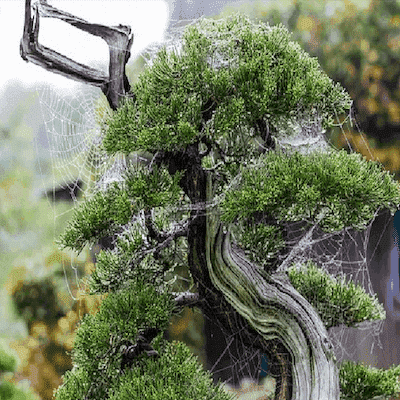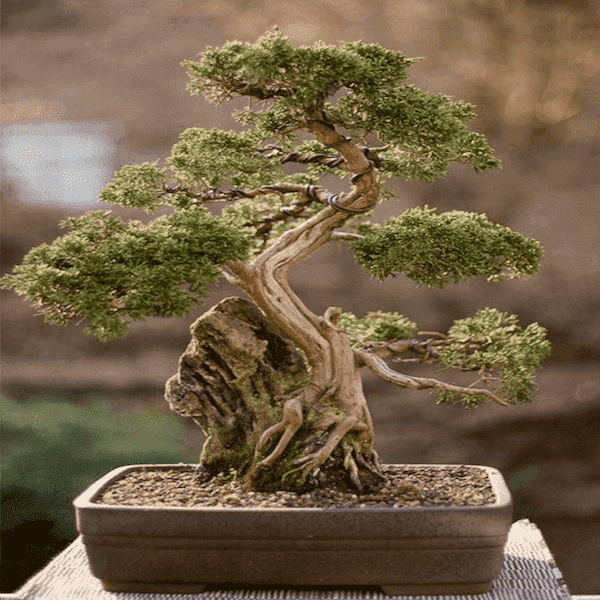Softwoods
A forest is a carbon bank, every tree a deposit.
Bonsai trees refer to the “art” of growing miniature trees to “look” like full grown trees. The practice of bonsai originated in China, where groups of trees were grown and kept small in miniature landscape scene never more than 5 feet across. The practice migrated to Japan were only a single tree was grown as a bonsai.
There are many famous bonsai trees around the world that are considered to be superb specimens of the art form. These trees have been cultivated for many years and are often highly prized by collectors and enthusiasts. Here are a few examples of famous bonsai trees:
These famous bonsai trees are just a few examples of the many incredible small tree specimens that exist around the world. While they may command high prices, they are also a testament to the skill and dedication of the artists who created them, and the beauty and wonder of the art of bonsai.
Pruning a bonsai tree can be a delicate process, but with careful attention and patience, it can be done effectively. Here are step-by-step instructions on how to prune a bonsai tree:
Remember that pruning a bonsai tree is an ongoing process. Regular pruning will help to maintain the tree's shape and health, and it will also promote healthy growth.
Today, bonsai trees are grown all over the world. Stunning specimens, some of them several hundred years old can sell for hundreds of thousands of dollars. Growing bonsai trees can be extremely meditative, which may explain why persons of quiet persuasion adopt the practice.
Simply planting a tree seedling in a pot does not grow a bonsai tree; it would quickly become root bound and die the second or third year. Growing bonsai trees requires special training, a keen eye and the patience of “Job”.
The first step for growing bonsai indoors is that you need to choose a suitable species of tree. Some trees, such as Ficus, Chinese Elm, and Jade, are well-suited for indoor environments as they can tolerate low light and dry indoor air.
Next, you will need to provide your bonsai with the proper growing conditions. This includes proper lighting, humidity levels, and soil moisture. Bonsai trees require a lot of light, so you may need to provide additional lighting with grow lights. You should also place your bonsai near a window that receives bright, indirect sunlight.
Maintaining proper humidity levels is also important for indoor bonsai trees. You can increase humidity by placing a tray of water near your bonsai, or by using a humidifier. Additionally, you should regularly mist your bonsai to keep the foliage moist.
Finally, it's important to choose the right potting soil and fertilizer for your bonsai tree. Bonsai trees require a well-draining soil that allows for proper root development. You should also use a slow-release fertilizer specifically designed for bonsai trees.
With proper care and attention, you can successfully grow bonsai trees indoors and enjoy the beauty of these miniature trees in your home.
If you choose to grow bonsai outdoors, you will need to consider the climate and weather conditions in your area. Some species of bonsai trees are more suited to specific climates and may not thrive in extreme temperatures or harsh weather conditions. You will need to research and select bonsai tree species that are well-suited to the climate in your area.
You will also need to provide your bonsai with proper care and maintenance. This includes watering, fertilizing, pruning, and protection from pests and disease. Additionally, you should consider the placement of your bonsai tree in your outdoor environment. Bonsai trees need sufficient sunlight, so you will need to place your tree in a location that receives the appropriate amount of sunlight for your particular species of bonsai.
Overall, growing bonsai outdoors can be a rewarding and enjoyable experience, as it allows you to create a beautiful, natural miniature landscape in your own backyard.
Growing bonsai trees teaches a person to spiritually manifest the future look of tree and apply strategic root, limb and bud pruning to achieve that vision. A bonsai tree is typically grown in special “air-root” pot. Several hundred openings spaced about the circumference of the pot allow the passthrough of ambient air, which prunes the roots keeping them small and compact. Every second year, the tree is removed from the air pot and its roots are drastically pruned back and then replanted back into the pot. This pruning technique enables the plant to grow indefinitely in the one pot. Inflexible wire supports are sometimes used to tether and train the branches of a bonsai into a desired shape.
Growing bonsai trees can indeed be a spiritual experience that is both meditative and transcendental. Bonsai cultivation requires a lot of patience and attention to detail, which can help to quiet the mind and promote a sense of inner peace.
There is something inherently calming and grounding about being in nature and caring for a living being, and bonsai cultivation offers a way to bring a piece of nature into our homes or workplaces. The act of pruning and shaping a bonsai tree can be a form of moving meditation, helping to quiet the mind and promote mindfulness.
Additionally, the process of growing and caring for a bonsai tree can be a deeply rewarding experience, as it allows us to witness the beauty of growth and transformation over time. It can help us to connect with the natural world and appreciate the simple things in life.
Overall, growing bonsai trees can be a wonderful way to nourish the soul and promote a sense of inner peace and wellbeing.
Although clearly not thought of as a commercial timber plantation tree, bonsai has a critical role to play in the world as we find it today. Land clear agriculture, over logging and climate change have had devastating effects on our forests leaving several trees threatened and endangered and a few on the verge of extinction.
You can help save these trees from extinction by making a small donation to our “Bonsai Sanctuary”, a miniature tree plantation that grows endangered trees from seed collected from around the world. Trees raised in the bonsai style are grown to bear seed, which will be stored in a tree seed bank used as a repository to re-establish a species when the need arises and even though stored seeds were collected from miniature trees, they will grow into full size trees once they are sown into soil in the wild.
African blackwood, or black ebony, is on the verge of extinction in its natural habitat, the plains of Saharan Africa. Exploited for more than a hundred years there are few trees left. It has become so rare and so expensive that tree poachers take even the smallest tree seedlings if they can find them.
Eastern White Pine (Pinus strobus): The Eastern White Pine is found in the northeastern United States and eastern Canada. It is threatened by habitat loss due to development. Other species of pine are are the endangered list and include, Japanese Black Pine and Japanese White Pine.
There are several birch tree species that are currently endangered or threatened including grey birch, dwarf birch, paper birch, red leaf birch and yellow birch.
Ash trees are currently facing a significant threat due to the spread of the emerald ash borer (EAB), an invasive beetle that has devastated ash tree populations in North America. As a result, many species of ash trees are currently endangered or threatened including green ash, black ash, white ash, and European ash.
There are several species of maple trees that are considered endangered or threatened due to habitat loss, climate change, and other environmental factors. Examples include Big Leaf maple, Florida maple, Southern sugar maple, and nikkio maple, a species native to Japan.
Many species of flowering trees are currently facing threats from habitat loss, climate change, and other factors. Here are a few examples of endangered and threatened flowering trees: Bigleaf Magnolia, Cucumber Tree, Eastern Redbud, Franklinia, and Katsura Tree, a tree native to Japan.
Partner with us in a land management project to repurpose agricultural lands into appreciating tree assets. We have partnered with growingtogive.org, a 501c3 nonprofit, to create tree planting partnerships with land donors.
We have partnered with growingtogive.org, a Washington State nonprofit to create a land and tree partnership program that repurposes agricultural land into appreciating tree assets.
The program utilizes privately owned land to plant trees that would benefit both the landowner and the environment.
If you have 100 acres or more of flat, fallow farmland and would like to plant trees, then we would like to talk to you. There are no costs to enter the program. You own the land; you own the trees we plant for free and there are no restrictions; you can sell or transfer the land with the trees anytime.
Copyright © All rights reserved Tree Plantation


